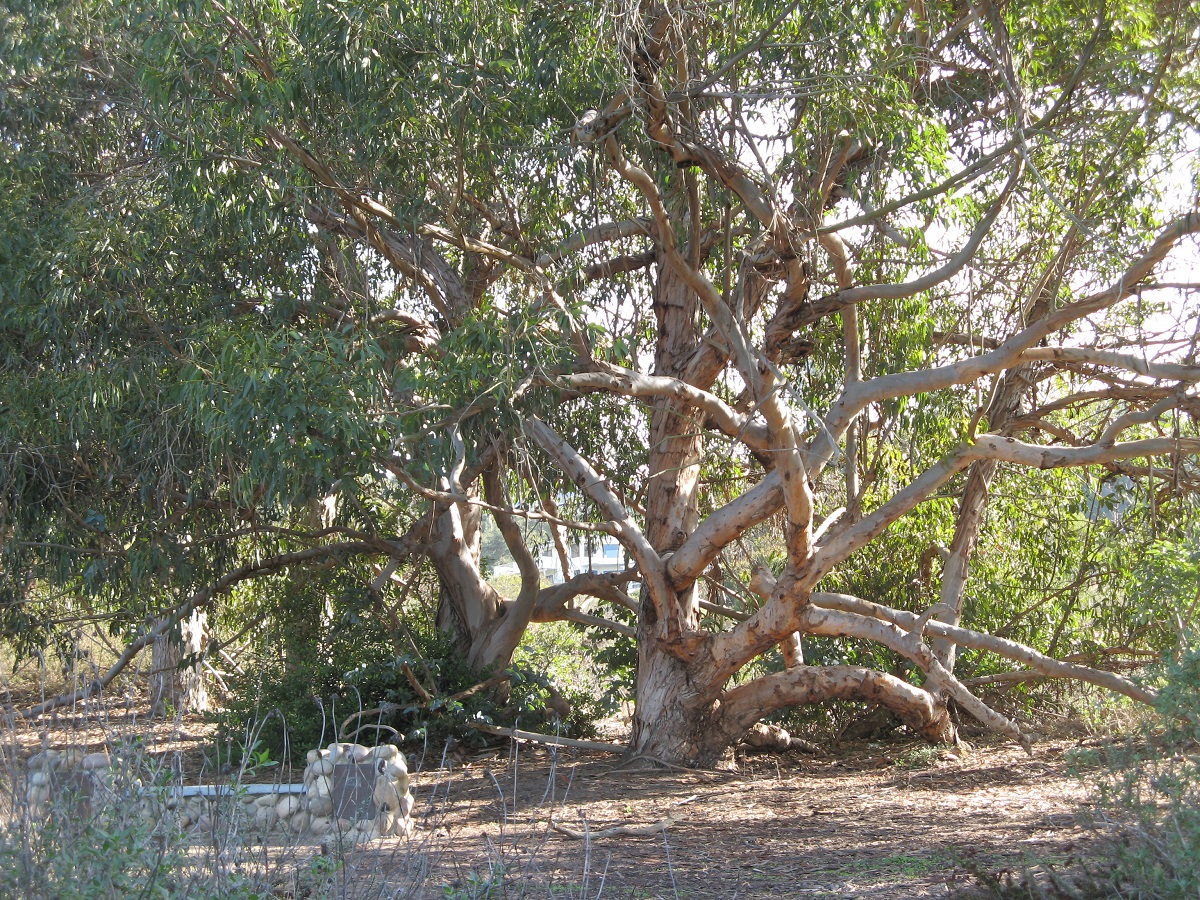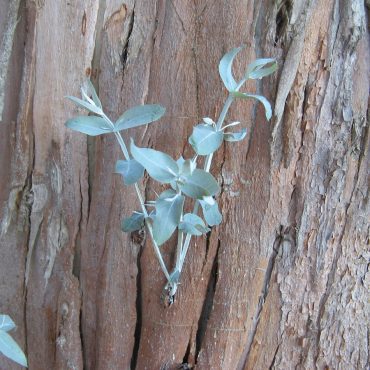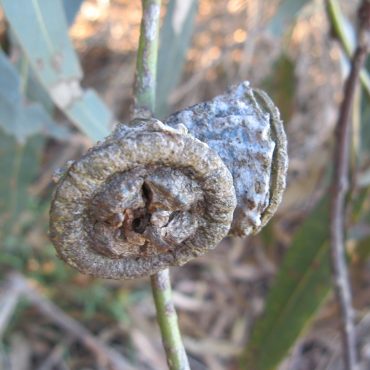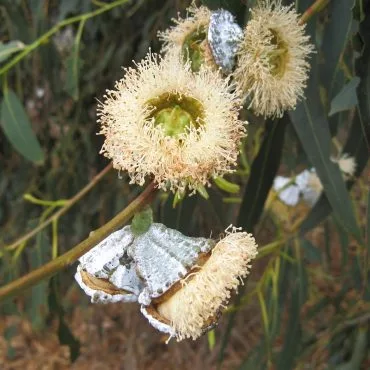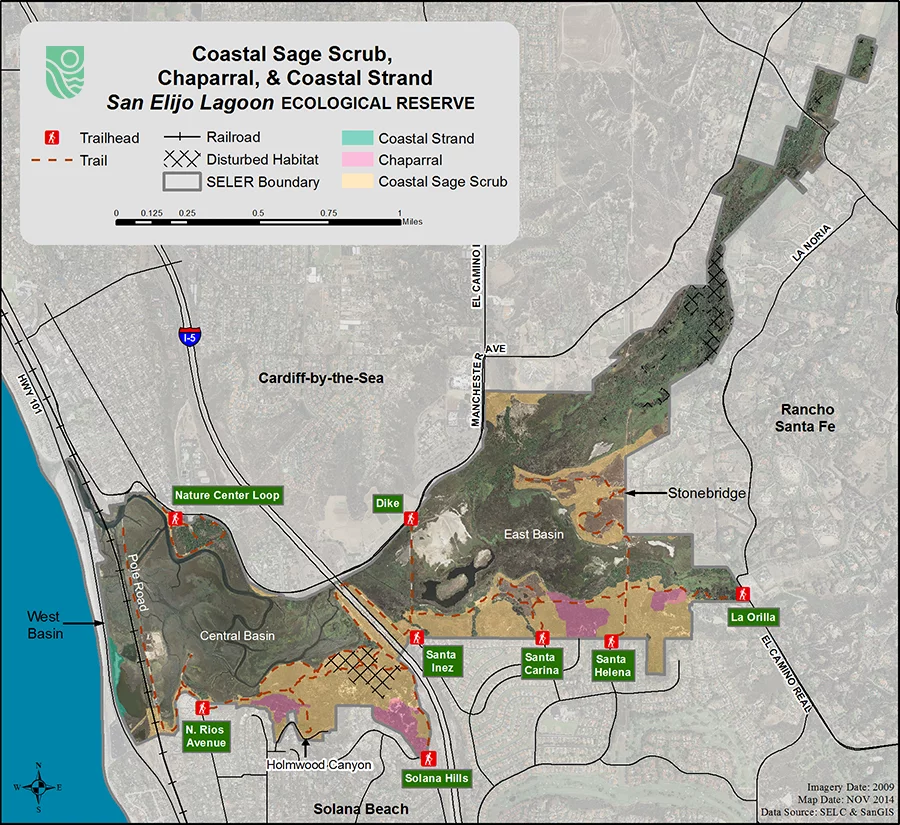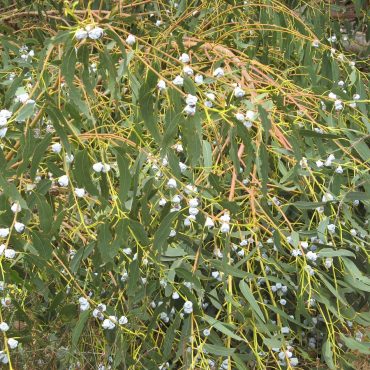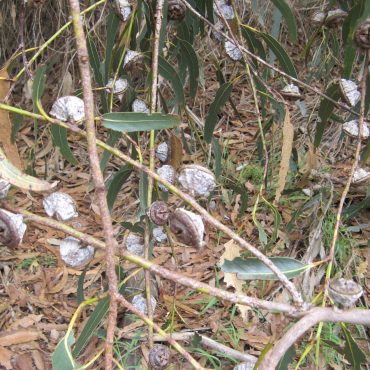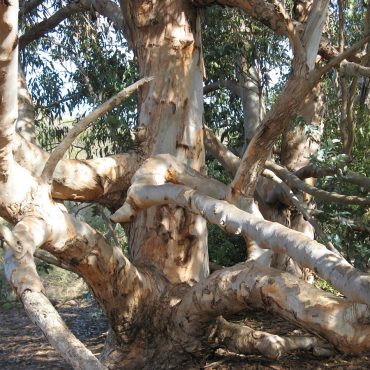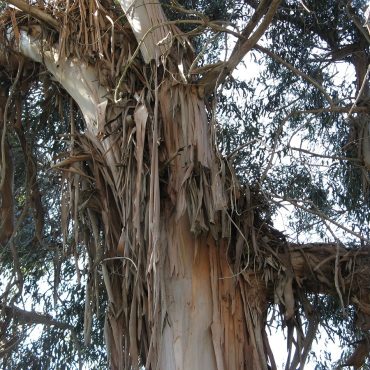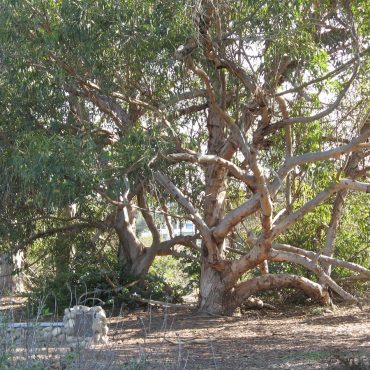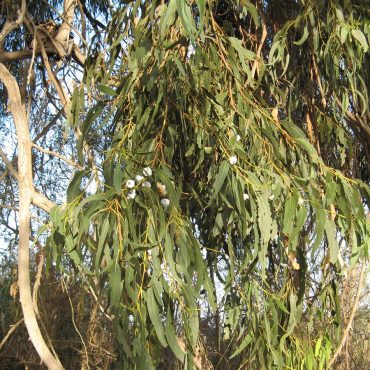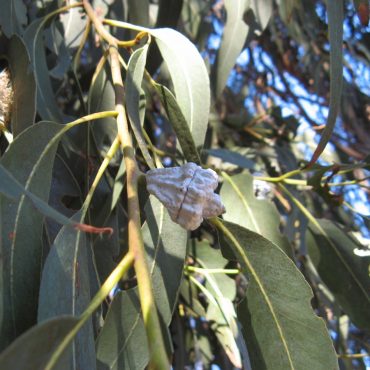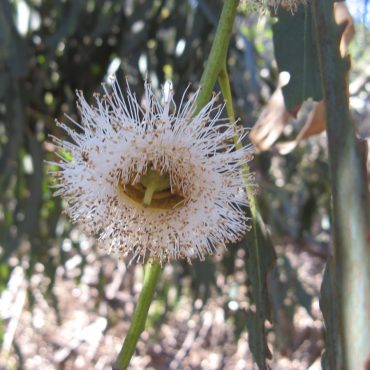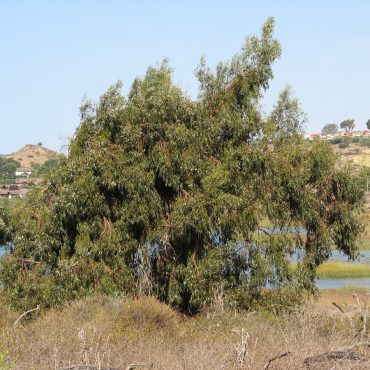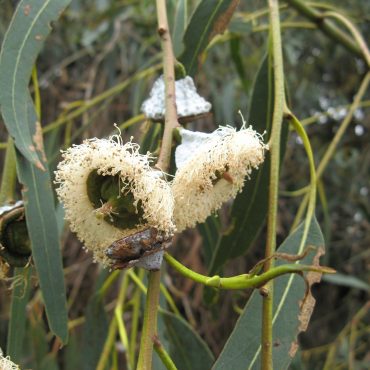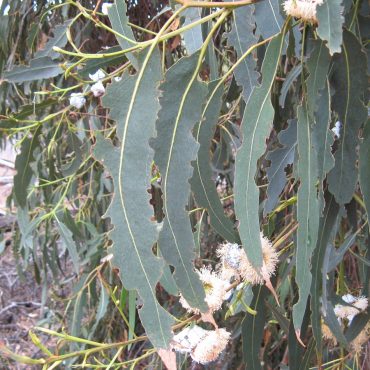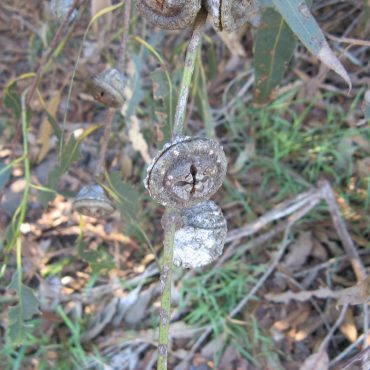Blue gums are large evergreen trees which, under good conditions, can reach more than 100 feet (30 m) tall and 50 feet (15 m) wide; under poor conditions, they are stunted shrubs. Trunks become massive with age with a large amount of gray/brown bark, that is persistent near base of tree but peels in long strips higher up to reveal smooth, pale inner bark. Tough, leathery leaves have flattened petioles and are alternate on stems, often hanging vertically. Leaves are lanceolate to sickle-shaped, usually less than 10 inches (25 cm) long with smooth margins and numerous oil glands. Leaves are green to dark blue-green in color. Like many species of Eucalyptus, the juvenile foliage is unlike mature foliage. Juvenile leaves are sessile and opposite on the stem, shorter and wider, with a waxy, blue gray surface.
Blue gum flowers are sessile or on short pedicels and occur singly or rarely in clusters of three in leaf axils of young shoots. The structure of the blue gum flower (like that of all Eucalyptus species) is unique; an excellent photographic description of the related swamp mahogany (E. robusta) is given by Johnston.197 The base of the flower is a vase like structure, the hypanthium, which is derived from the pedicel and encloses the pistil and stamens. In blue gum, the hypanthium is shaped like a broad cone, often four-angled and strongly ridged. Traditional petals and sepals are absent. Instead the sepals and petals (or the petals alone203) have united into a thick bud cap that covers the end of the hypanthium, enclosing the developing pistil and stamens. In blue gum this cap is a thick shallow dome, with a central cone, heavily ridged and warty, with many blister-like oil glands. The entire bud is a distinctive pale blue color, making the buds more conspicuous than the flowers.
Just prior to flowering, the expanding stamens push off the bud cap. The “flower” of a eucalyptus is a dense mass of hundreds of white stamens with pale yellow anthers. Anthers mature before the pistil, reducing self-fertilization.183,203 The pistil has an inferior ovary that occupies the entire hypanthium; the top is flattened but slightly capped around style with shallow indents that retain copious nectar. The style is stout, topped with a green or rosy stigma. The main flowering time is October through March, making blue gum our only winter-blooming eucalypt.7
The fruit of a eucalyptus, often called a gumnut, is a compound structure of hypanthium and ovary which becomes woody when mature. In blue gum the fruit is an angled or rounded flat-topped cone ½ – 1 inch wide (1.8 – 2.5 cm) long. Tiny seeds are released through slits between four valves in the top of the ovary. In blue gum, valves rarely extend far beyond the edge of the hypanthium.

